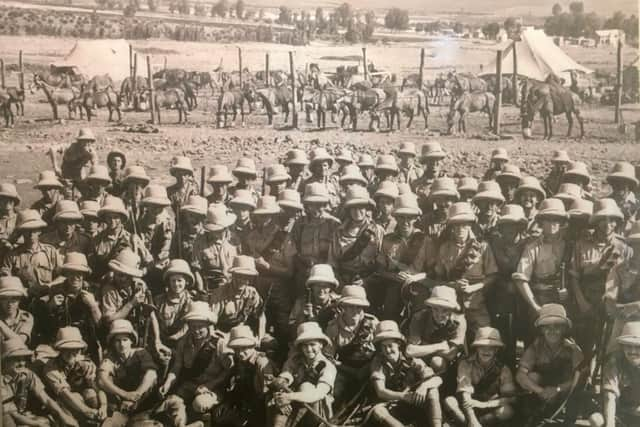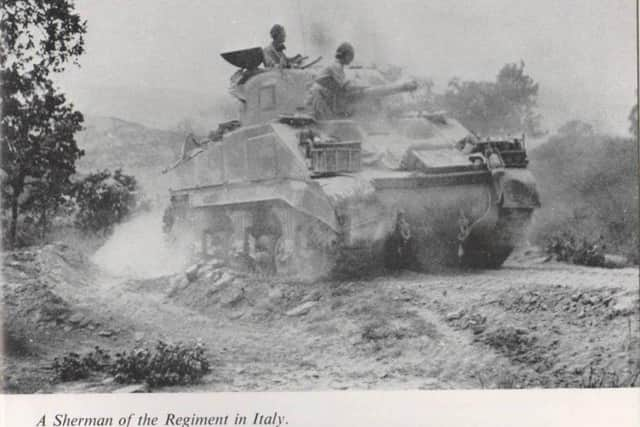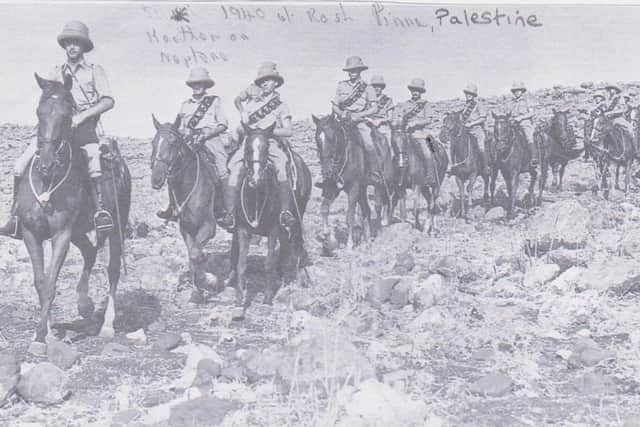Warwickshire Yeomanry soldiers saw action in some of the toughest campaigns in WW2
and live on Freeview channel 276
Unlocking Warwick is researching the stories behind the names of those who died in the Second World War on the Church Street memorial in the town.
They are asking people to get in touch with information about those who died, and also if they have memories of life in Warwick during the war.
Advertisement
Hide AdAdvertisement
Hide AdThe research into the background stories of the Warwick men killed in WW2, being carried out by Unlocking Warwick has found that three of the WW2 names on the war memorial in Church Street were men serving with the Warwickshire Yeomanry.


A famous regiment, The Warwickshire Yeomanry Cavalry, based in Warwick, was a volunteer regiment raised in 1794 as ‘Gentlemen and Yeomanry’.
It expanded during the Crimean War and served with distinction in The Boer War. In 1908 it was equipped as Hussars with its HQ in Northgate Street under the new title of The Warwickshire Yeomanry.
In the First World War, the regiment fought as infantry at Gallipoli, then as cavalry in the Middle East. In 1917 they took part in the last unsupported cavalry charge at Huj in Palestine, putting a Turkish infantry brigade to flight and capturing 12 field guns and howitzers.
Advertisement
Hide AdAdvertisement
Hide AdFrom July 1918 the Yeomanry served as machine gunners on the Western Front.


Secretary of Unlocking Warwick, Rick Thompson, said: “In WW2 the men of the Warwickshire Yeomanry were involved in some of the toughest campaigns of the war.
“At the outbreak of war they were still serving on horseback and were attached to the 1st Cavalry Division.
“In 1940 the regiment moved to the Middle East, fighting in Iraq and Syria. In late 1941 they switched from horses to tanks and transferred into the Royal Armoured Corps.
Advertisement
Hide AdAdvertisement
Hide Ad“The Warwickshire Yeomanry then saw service in the North African Campaign, fighting at the two battles of El Alamein, and in 1944 they were deployed to Italy.


“We found that the three Warwick men commemorated on the war memorial who were serving with the Yeomanry have interesting personal stories”.
Ernest Heather: Ernest and his wife Ethel lived at 8 Beauchamp Street in Warwick
A professional soldier, Major Heather fought with the 20th Hussars during the First World War and transferred to the Royal Warwickshire Regiment on 1919.
Advertisement
Hide AdAdvertisement
Hide AdHe became a supervisor at the Army Records Office at St John’s in Warwick.
When WW2 broke out in 1939, he transferred to the Warwickshire Yeomanry, then still a mounted cavalry unit, and served as a staff officer in The Middle East.
In 1942 he was mentioned in despatches for distinguished service, but a year later he was reported on the casualty list to be dangerously ill and he was brought home suffering from dysentery and pneumonia.
He worked for a while as a military registrar at the Queen Elizabeth Hospital in Birmingham and at the end of the war took a position at the County Record Office in Warwick.
Advertisement
Hide AdAdvertisement
Hide AdBut he never fully recovered from the illnesses contracted on active service and died in 1946 at the age of 58.
He was buried in Warwick ceremony with full military honours, and is commemorated at All Saints Church, Emscote.
Arthur Midwinter and the Battle of the Cemetery
Arthur Midwinter, known as ‘Mac’, lived at Beauchamp Road with his parents and six brothers and sisters, and went to All Saints School and was a well known local sportsman, excelling at golf and football.
He then worked at the Emscote Iron Foundry by Portobello Bridge.
Advertisement
Hide AdAdvertisement
Hide AdHe served as a trooper with the Yeomanry in the Middle East from the start of the war until 1944.
By now a mechanised unit in Sherman Tanks, they were in the forefront of the invasion of Italy.
One of the soldiers, Reginald Buxton Haynes, later wrote a dramatic account of the close engagement with enemy armour north of Orvieto.
It vividly describes the perils of being in the first tank in an advancing unit.
Advertisement
Hide AdAdvertisement
Hide AdIt was known as The Battle of the Cemetery, because the German tanks and machine guns had taken position behind Ficcule town cemetery wall and began pounding the advancing British units.
Haynes wrote in his war diary: “The allied tanks and their crews were soon enveloped in fire and smoke... Schroom. POW! Another shot took our leading tank in its most vulnerable spot – the revolving turret ring with its 75mm gun.
“There was no time for explanations, ‘Bale out’ was the cry.
“Those who could did, but it was too late for Bill Abrams, Arthur Midwinter and Harry Boynton – all dead, and many wounded. Schroom.
Advertisement
Hide AdAdvertisement
Hide Ad“POW! Does it have to go on? Our tank was the next to be hit. The crew of five were stunned – or worse... all is haywire”.
Arthur ‘Mac’ Midwinter is buried at Orvieto in Italy. He was 25 when he was killed in the Battle of the Cemetery.
Cyril Hall: died at El Alamein
Cyril Hall lived with his parents in Warwick’s Lower Cape.
He fought with the Warwickshire Yeomanry in their Sherman Tanks in the north Africa campaign, when Montgomery was leading the British forces against Rommel’s heavily armed troops.
On November 2 1942, there was a particularly fierce battle.
Advertisement
Hide AdAdvertisement
Hide AdAfter enduring an artillery barrage, the British units advanced through a minefield and eight tanks were lost.
Then they were met by heavy fire from anti-tank guns and field guns.
The commanding officer’s diary of the day says: “Orders were received to withdraw. Out of 44 tanks that went in, 7 came out.”
He then lists those who were killed, including Trooper Hall.
Advertisement
Hide AdAdvertisement
Hide AdCyril Hall is buried at El Alamein War Cemetery in Egypt, and with Major Heather and Trooper Midwinter, is commemorated on the Yeomanry plaque in St Mary’s Church, as well as on the war memorial in Church Street.
The researchers are particularly grateful to Philip Wilson, museum trustee and archivist at the Warwickshire Yeomanry Museum in the Court House, Jury Street, for his detailed information and interesting photographs.
You can see details of the 112 men from Warwick who died in WW2 in the section marked ‘The Fallen’ at www.warwickwarmemorial.org.uk
Unlocking Warwick is keen to add to its research on the memorial, and on life in Warwick during the war.
Advertisement
Hide AdAdvertisement
Hide AdEmail your family photos or information about the Warwick men who died in WW2 to Christine Shaw at [email protected] or if scanning photos or emailing is difficult, ask someone to email your phone number and one of the volunteers will give you a call.
Ernest Heather, pictured second from left, during his service in the Middle East.
‘The men of the Warwickshire Yeomanry were involved in some of the toughest campaigns of the war